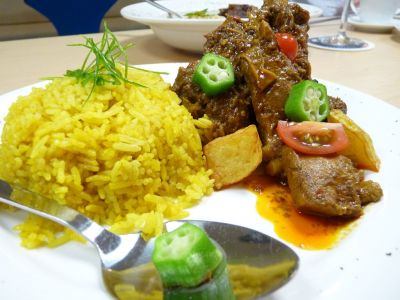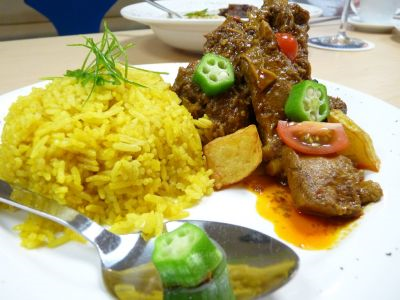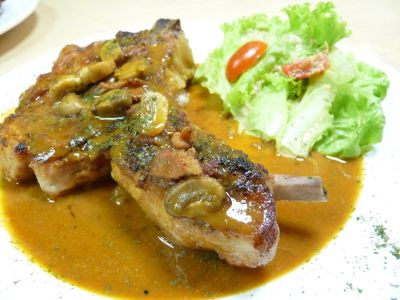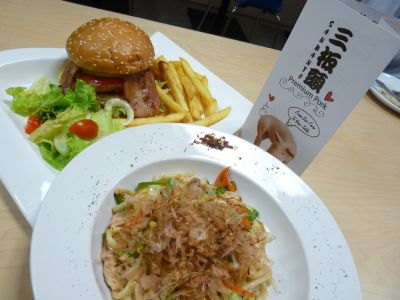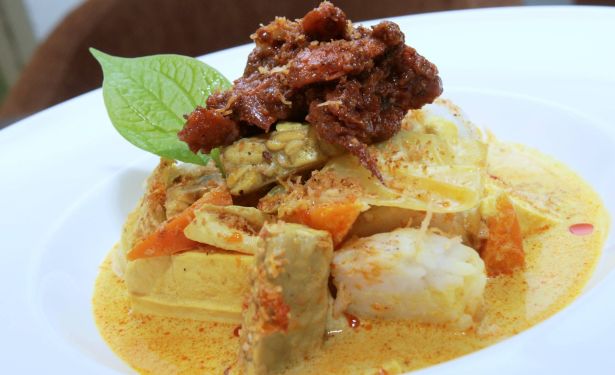DESPITE its exotic, seemingly Japanese name, Sanbanto is in fact the colloquial Chinese name for Jemaluang, a little settlement not too far from Mersing, Johor.
This is where Sanbanto produces its own pork, complete with what is recognised as the country’s first ISO22000 and HACCP-certified pig farm.
According to Eddy Ng, the group managing director of parent company Ufresh Sdn Bhd, the locale itself was chosen as their brand of premium pork, much like the way Kobe is synonymous with premium Wagyu beef from the Hyōgo Prefecture.
And in this regard, Sanbanto is pulling out all the stops – their farm boasts pork that is beta-agonist free, has no drug residue, is fed on grain with probiotics, and is supplied with mineral-rich underground reservoirs instead of river water. The pigs themselves are an optimum crossbreed of landrace, Yorkshire and Duroc heritage.
Of course, the technical explanation only served to pique our curiosity (and hunger) further.
Malaysian premium pork, “fresh from our farm to your table”?
All of Sanbanto’s three branches – SS2, IOI Boulevard in Puchong and Bangsar – have different menus and the management encourages experimentation from their chefs to demonstrate the versatility and quality of their meat products.
As the new kid on the block, Sanbanto is a novel concept although certainly not the first. It was first conceived as a butchery in SS2 for premium pork, but it didn’t take long for customers to demand the actual preparation of these quality cuts.
As an addendum to the butchery, Sanbanto’s dining area is utilitarian with long-table-and-bench décor, which surprisingly makes one focus more on the actual food and not its presentation.
We had the pleasure of visiting the branch in Bangsar, which coincidentally did have a strong Japanese twist to its menu courtesy of Chef Sachiko’s masterly touch. With equal porcine gusto, we dived right into the emerging platters from the small kitchen, which Ng assured was a selection of customer favourites across all three outlets.
First up on the menu was Demi-glazed Pork Trotters with Garlic Fried Rice, which more closely resembled stewed pork in taste than the traditional vinegar pork trotters popular in Cantonese cuisine.
The preparation was also simple with the ubiquitous soy sauce and dried chillies but the flavour surprisingly rich, thanks to the freshness and suppleness of the meat which melted right off the bone.
The direction of the next dish took a sudden turn with Curry Ribs with Turmeric Rice, another familiar preparation to Malaysians who love a good curry stew with ladies’ fingers and cherry tomatoes completing the dish.
The spices were insistent in their presence but never overpowering, and the guilty richness of the dish brought back my dinner companion’s childhood memories of homemade wild boar curry.
We next tried the Pork Chop, a standard fare in many a pork eatery but one which was not officially on Sanbanto’s menu and hence had yet to receive a more glamorous name. We got a cut of loin which had a good balance of slightly fatty to fully-lean meat.
We were told that the cut was not tenderised in the least, which showed through some slightly hard-to-chew bits. However, the secret recipe mushroom and herb sauce kept the huge cut moist throughout and would no doubt satisfy a hardcore carnivore.
It would be good to note that the Puchong outlet offers a shoulder loin option, which due to the cut’s rarer availability is only offered in limited quantities per day. This cut features pronounced marbling and puts the price of the dish at a higher RM45.
There were also other less pork-centric dishes such as Yaki Udon, which was stir-fried udon in light soy sauce with tofu puffs, cabbage and pieces of lean pork. Bonito flakes are added as a final touch but the overall experience was rather pale in comparison to the meat-heavy dishes available.
Likewise, the Pork Katsu was a little dry in terms of taste and presentation, without denying that the fresh meat was perceptibly different from the usual straight-from-freezer varieties.
However, the completely pork-free Sweet Potato Soup was both a culinary and sensory surprise. Its deep Barney-purple colour obliged some degree of courage for the first slurp, but we were instantly rewarded with a mouth-filling satisfaction that was more savoury than sweet. It was topped with roasted apple slices and was simply delicious, not to mention deceptively healthy.
My personal favourite was the Ultimate Burger, a succulent pork patty with another secret blend of spices sandwiched between a chunk of deep-fried mozzarella and the tastiest crispy bacon strips I ever had.
I knew better than to doubt the patty’s MSG-free flavour, but the result was as comforting and sinful as a steaming bowl of instant Nissin noodles on a rainy night. Also, Mozzarella cheese oozing out of a crispy breadcrumbed exterior is an experience that lingers.
It is no surprise that the Ultimate Burger is a popular choice and you can buy your own burger patties from the butchery at only RM7 for two.
Other things to look out for are the homemade banana ice-cream and the Hausmacher Platte (Homemade Platter), the latter of which is unique to the Bangsar outlet with smoked ham on rock melon and liver pate on baguette slices accompanied by a selection of cheese. We did not try the platter as it was still in development but it gave us an excuse to visit again.
Everything was washed down by a generous pint of Weihenstephan from the world’s oldest brewery in Bavaria. The slightly sweet but never heavy weissbier (wheat beer) was the perfect accompaniment to all the savoury pork dishes. If you prefer your own vintage, corkage is available at RM20 per bottle.
All in all, Sanbanto is the quintessential pork-lovers’ haven for gourmets and casual diners alike. With an extensive menu covering very diverse local and international influences, this is the place to be at a very reasonable price for what is arguably Malaysia’s finest pork.
The good: Pork lovers can satisfy almost every craving through a myriad of preparations.
The bad: A diverse menu is hard to manage and offerings are inconsistent…for now.
The excellent: There’s a new name for premium pork – Sanbanto.
This is the writer’s personal observation and not an endorsement by Kuali.
